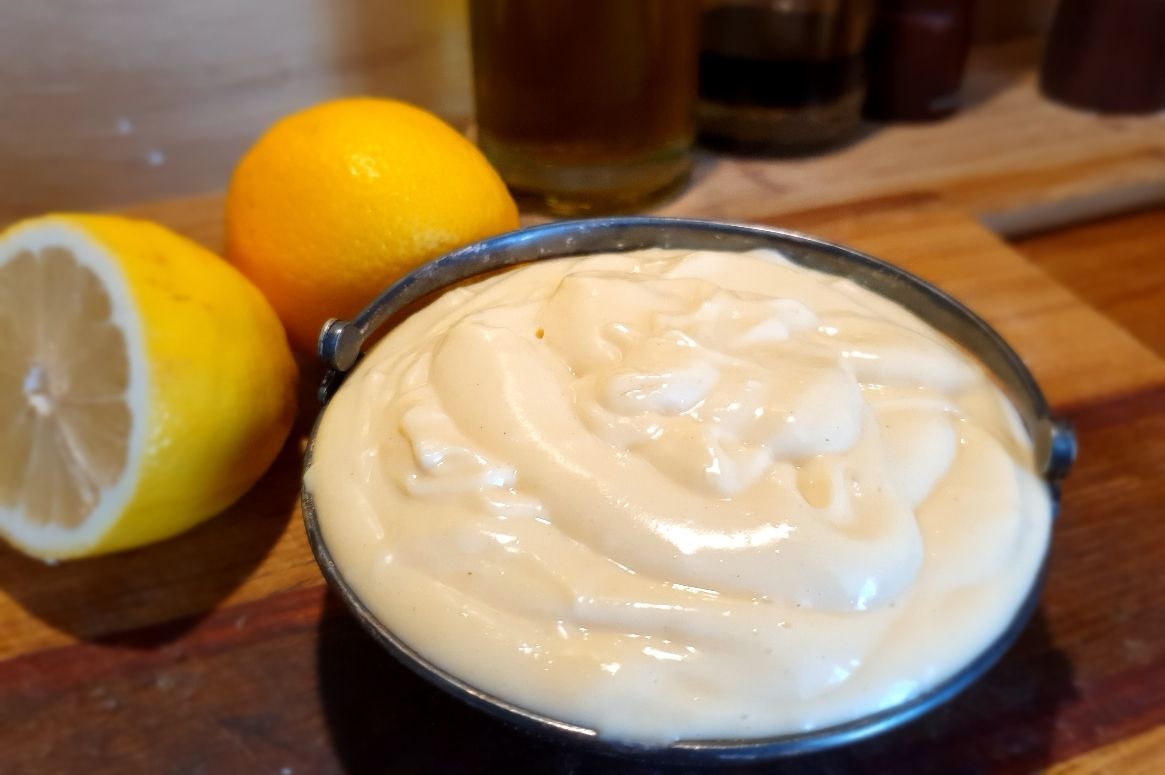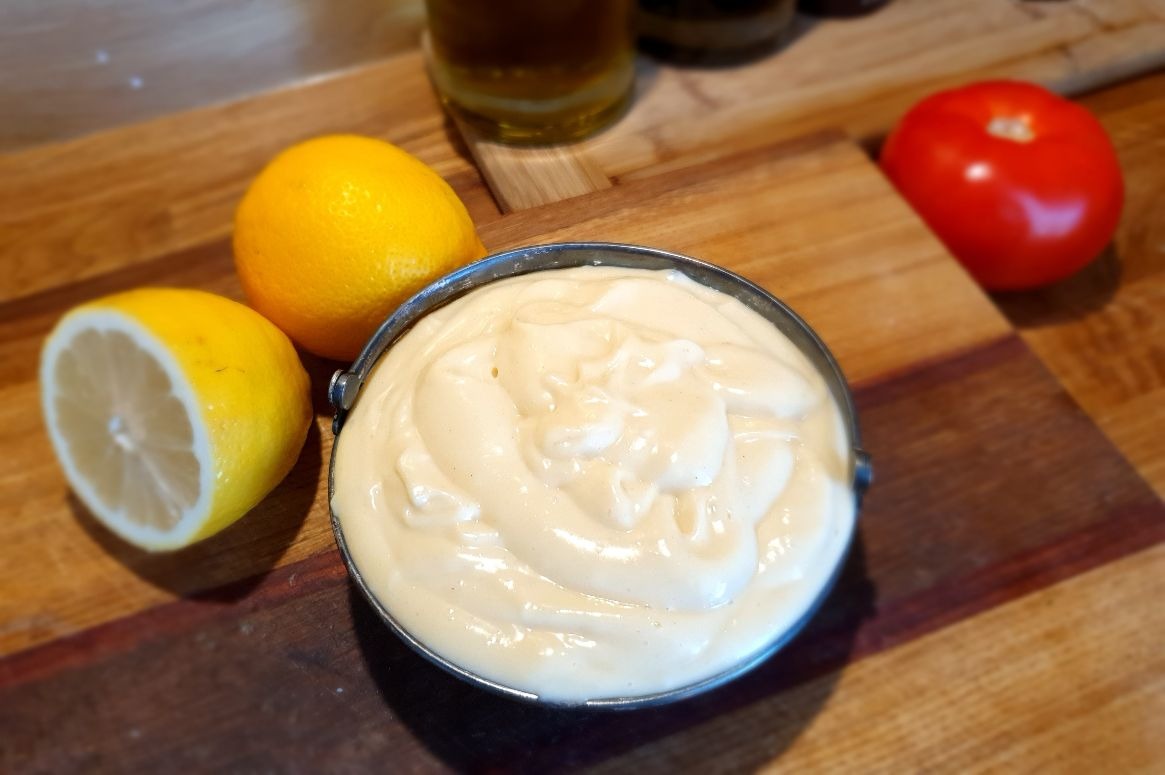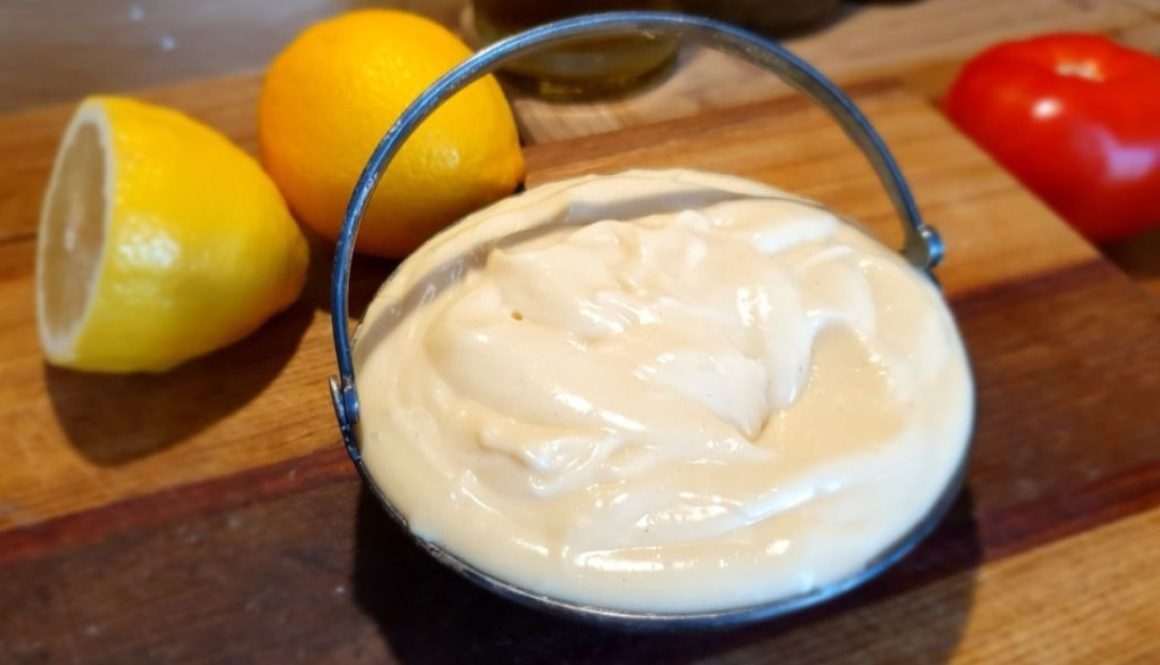Mayonnaise
Mayonnaise is one of the most famous sauces in the world. There are hundreds of variations and hundreds of different mayonnaise producers today. This is the basis for many different sauces, which have also become a classic. According to Harold McGee’s definition, mayonnaise is an oil emulsion of oil droplets consisting of egg yolk, vinegar, water, and often the mustard. Classic mayonnaise is seasoned simply with salt and sometimes with black pepper. Up to 80% of mayonnaise consists of oil, and this emulsion is usually so thick that it does not flow. Mayonnaise is usually used as a cold sauce, but its egg content allows it to be used to make hot dishes. For example, chicken pieces brushed with mayonnaise will become nicely brown in the oven.
Historically, it is not entirely clear who first made this sauce and in which country. According to some sources, the mayonnaise-like sauce was made in France around 1750, while references to garlic-flavored emulsion have been found in Spanish 14th-century writings. Some sources suggest that this sauce was brought to the table by the chef of Duke de Richelieu after the conquest of Mahon Island in 1756. After that time, the sauce spread in French high society. Other sources again claim that the sauce was made by chefs in the French city of Bayonne. In reality, it doesn’t matter where this sauce originated. Today, it is an everyday part of most kitchens.

Preparation time: 10 minutes
Level: easy
Volume: 250 ml
Ingredients:
1 egg yolk
200 ml of neutral-tasting cooking oil. Sunflower or rapeseed oil goes well, olive oil has a too intense taste and is not suitable
1 tablespoon lemon juice
1 tablespoon dijon mustard
Salt and black pepper if desired
Preparation:
1. Start making mayonnaise with room-warm ingredients. Mix all components except the oil.
2. Use a whisk or electric mixer, start mixing at low speed and increase speed later. Add the oil drop by drop at the beginning and mix well until smooth. Adding about 20 ml shows that the emulsion becomes slightly thicker. Add the oil slowly, in a fine stream, and mix until smooth. The more oil added, the thicker the mayonnaise becomes. Make sure you stop mixing before the mayonnaise will break.
3. Store mayonnaise in a cool place. Too cold or too hot temperatures will break down the oil emulsion. Commercial mayonnaises have been stable for a long time because producers use stabilizers. Homemade mayonnaise can be stored in the fridge for about a week. I can’t say for a long it can be stored it will be over quickly.
Ready !!

